Formation of the Fairy Chimneys
Formation of the Fairy Chimneys
Cappadocia’s Timeless Sculptures of Stone and Wind
The fairy chimneys now the enduring symbol of Cappadocia are the result of millions of years of geological processes and natural forces working in harmony. These surreal rock formations, sculpted by nature with astonishing patience, appear as if they were plucked from the pages of a fantasy tale. In fact, the term "fairy chimney" (Peri Bacası in Turkish) was coined by locals who imagined these cone-shaped towers as magical dwellings for fairies or spirits. And truly, standing before them for the first time, you might feel as though you've stepped into another world.
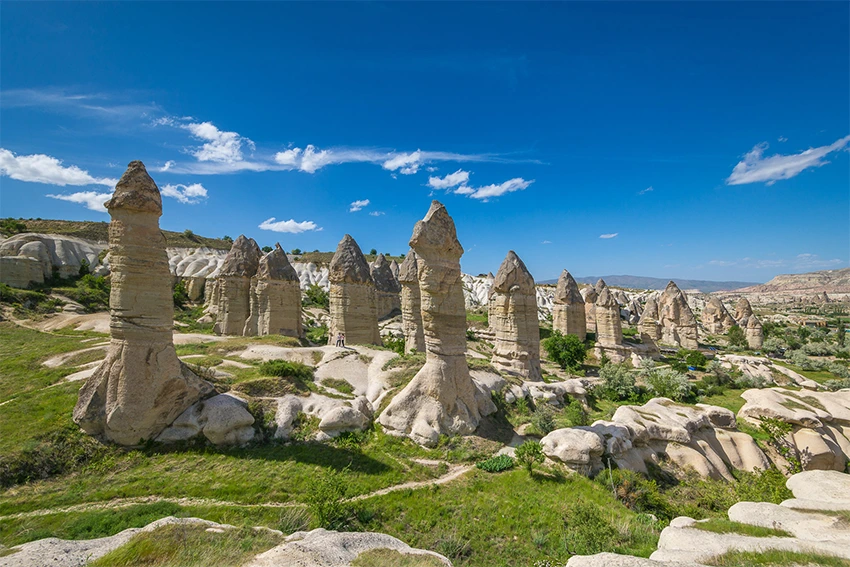
Volcanoes, Tuff Layers, and Erosion
The story of Cappadocia began around 60 million years ago. As the Taurus Mountains rose during the Tertiary period, a vast inland sea dried up, giving way to a broad plateau. Volcanic activity followed Mount Hasan, Mount Erciyes, and Mount Göllüdağ erupted repeatedly for millions of years, covering the region with thick layers of ash and lava.
The ash eventually solidified into tuff, a soft, porous rock layer sometimes reaching 100 meters thick. Over time, harder volcanic materials such as basalt spread across this tuff, creating a dual-layer landscape: soft below, resistant above.
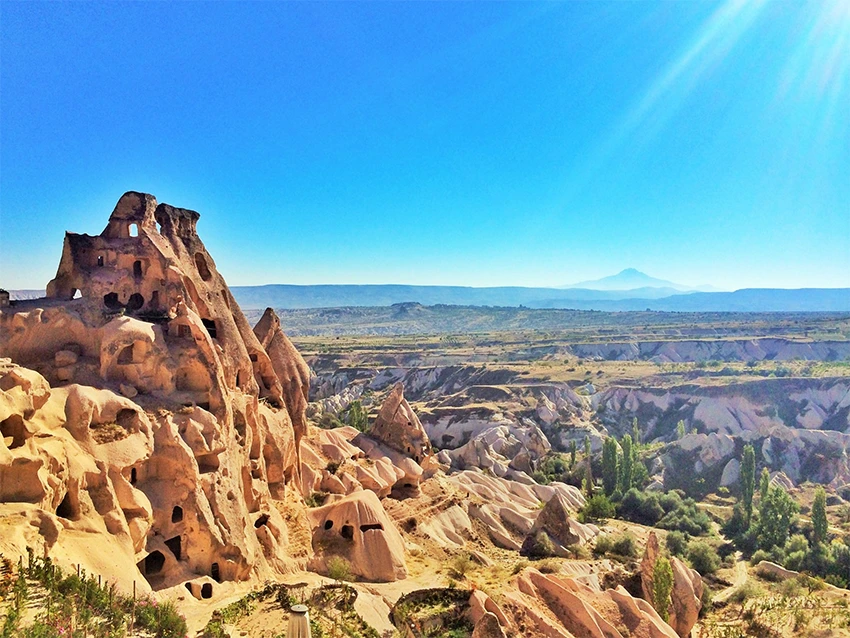
Contrary to common belief, geologist Prof. Dr. Celal Şengör notes that Cappadocia’s defining geology is not the direct product of Mount Erciyes or Mount Hasan but rather of massive caldera explosions near Niğde.
Once volcanic activity subsided, erosion took over. Rain, wind, rivers, and freeze-thaw cycles gradually wore down the soft tuff. However, where a harder capstone protected the underlying tuff, erosion was slowed. These protected columns eventually remained standing, while unshielded areas wore away forming the fairy chimneys we see today.
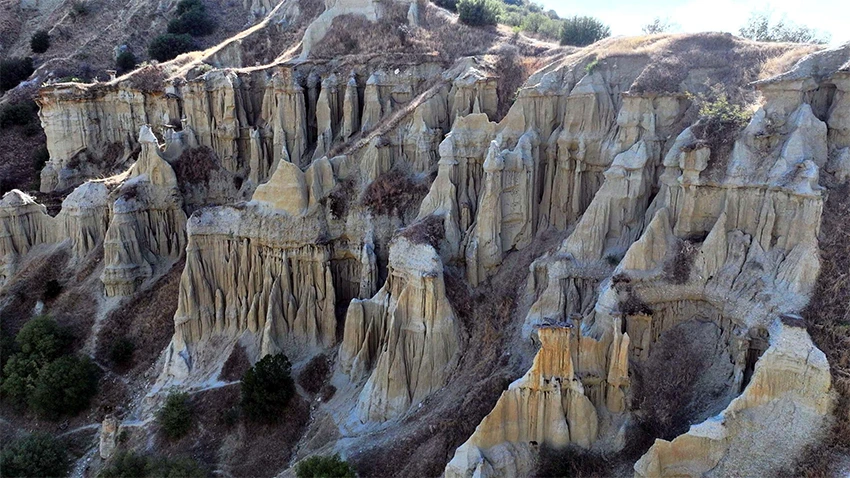
Each fairy chimney consists of a tuff base topped by a protective "hat" of stone. Over time, if this hat falls away, the pillar is exposed and may erode into other shapes. Their color and layering vary depending on the mineral content of the volcanic deposits resulting in tones of cream, pink, red, and even greenish hues.
Though extremely slow on a human timescale, erosion is still active today. Heavy rains, runoff, and wind continue to wear away at the fairy chimneys, subtly altering their shapes and even giving rise to new formations over centuries. When we explore Cappadocia, we are essentially witnessing a frozen moment in a geological work of art millions of years in the making.
Legends and Naming
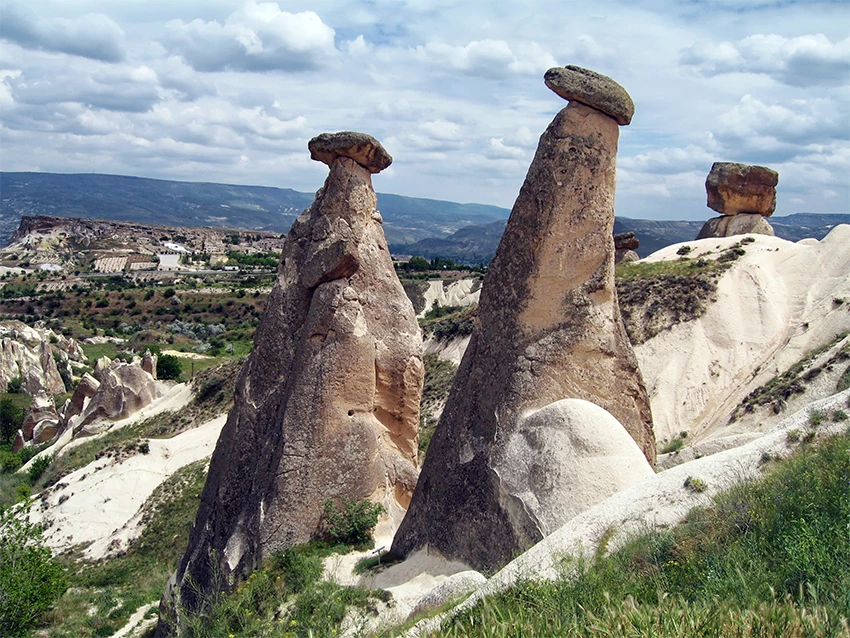
As scientifically fascinating as they are, fairy chimneys have long inspired the mythical imagination of the local people. The term “fairy chimney” originates from the belief that these formations were homes for supernatural beings fairies, spirits, or even djinns. Over time, this charming folk name spread and became the internationally accepted term: Fairy Chimneys.
One beloved local legend is that of the “Three Beauties” (Üç Güzeller) near Ürgüp. These three chimneys are said to represent a royal family king, queen, and child turned to stone. The story tells of a Cappadocian princess who fell in love with a shepherd and bore him a child. Her father, enraged, threatened to punish them. The princess prayed to be turned into stone to escape his wrath. Her wish was granted and today, the trio stands immortalized in rock.
Other fairy chimneys have also inspired tales and nicknames, adding magic to every hike. With a little imagination, visitors can see faces, animals, or mythical figures in the rocks each formation telling its own silent story.
Best Places to See Fairy Chimneys
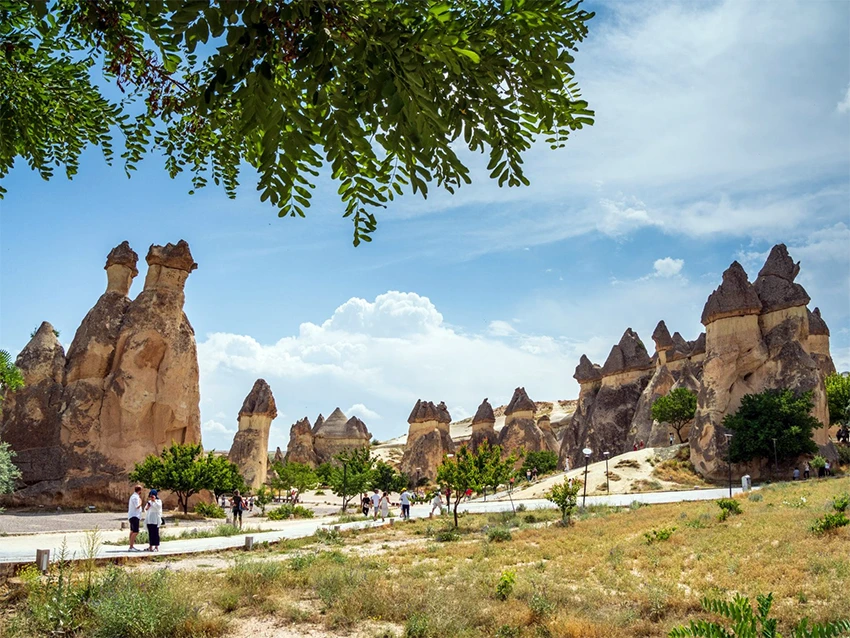
- Paşabağ (Monks Valley): Famous for its multi-headed fairy chimneys with wide basalt caps. The valley includes monk cells carved into the pillars and is ideal for photos during golden hour.
- Devrent Valley (Imagination Valley): Known for whimsical rock formations that resemble animals and objects such as a camel, seal, or human face. A playground for the imagination.
- Love Valley (Bağlıdere): Between Göreme and Çavuşin, this valley features tall, slender, pillar-like chimneys that gave rise to its cheeky name. The hike through the valley offers close-up views and unique angles.
- The Three Beauties (Üç Güzeller): Located just outside Ürgüp, this iconic trio of chimneys is one of Cappadocia’s most photographed views. Perfectly shaped and beautifully spaced, they’re a natural symbol of harmony.
- Göreme Open-Air Museum and Surroundings: Besides its rock-hewn churches and monasteries, the museum area includes impressive fairy chimneys that blend natural and cultural heritage into a single scene.
Cappadocia’s fairy chimneys are not just geological structures they are living witnesses of time, shaped by ancient fire and water, animated by local legends, and still evolving today. Whether viewed through the lens of science or story, they are a masterpiece of nature that continues to captivate all who wander among them.



